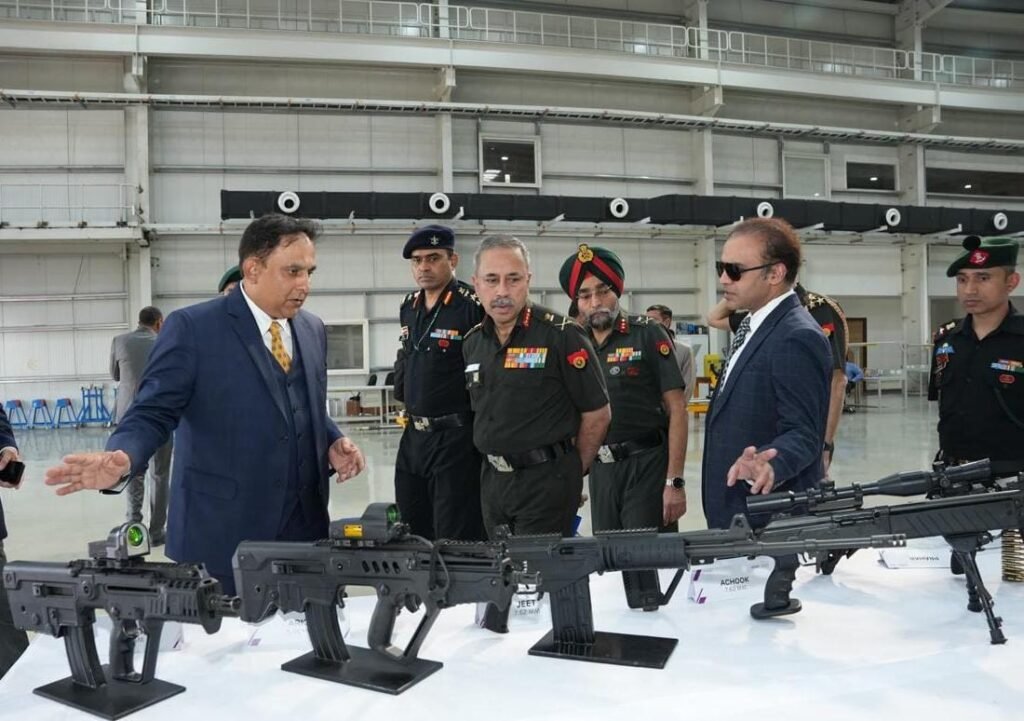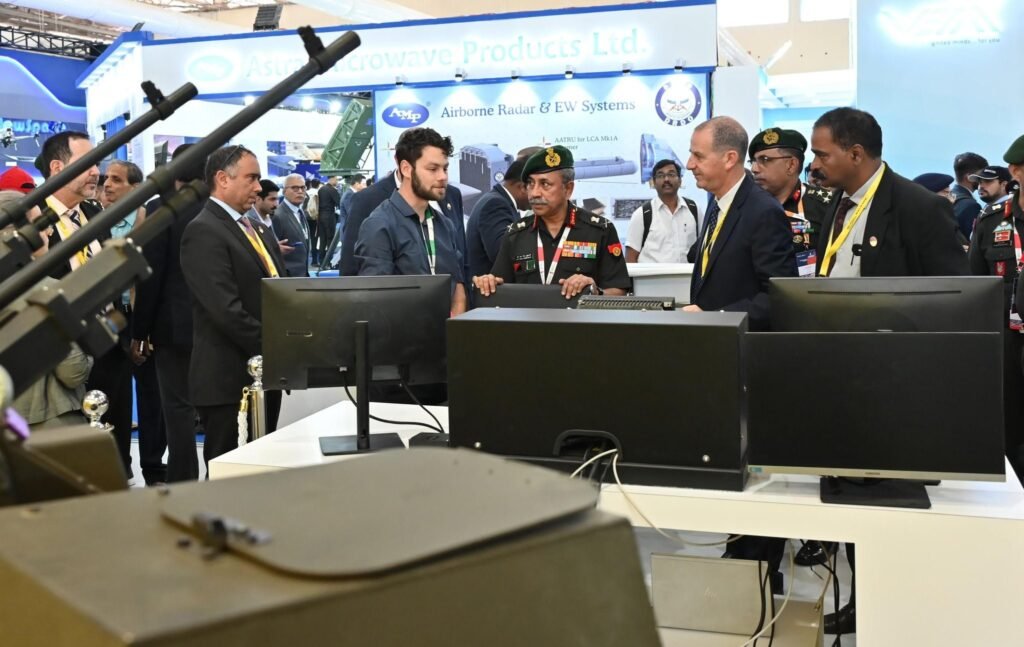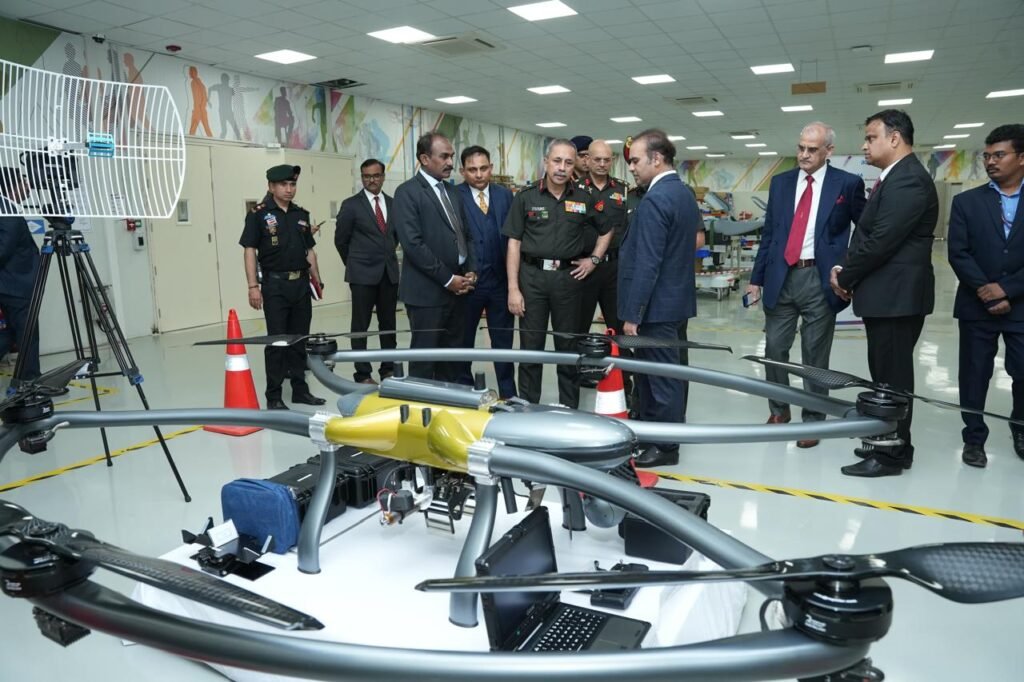
New Weapon in Indian Army 2025- The army intends to replace the L70 and ZU-23mm with next-generation platforms. However, sources indicate that, for now, it is not considering importing new guns.
With drones and other emerging technologies reshaping warfare, as seen in recent conflicts, the Army Air Defence has outlined a plan to enhance its capabilities. This includes replacing two outdated platforms, introducing new fragmentation ammunition for existing air defence guns, and deploying more advanced radars.
Additionally, the army aims to finalize a contract for the indigenously developed Quick Reaction Surface-to-Air Missile (QRSAM) system within the next 4-5 months, a senior official stated on Friday.
The Corps of Army Air Defence currently operates a diverse range of missile systems and guns, including the L70, Zu-23mm, Schilka, Tunguska, and Osa-AK missile systems.
“The era of guns is making a comeback. The army has maintained them for a reason, and they can be effectively utilized with fragmentation ammunition,” said Lt Gen Sumer Ivan D’Cunha, Director General of Army Air Defence (AAD).
Emphasizing the importance of modernization under the ‘Aatmanirbhar Bharat’ initiative, Lt Gen D’Cunha also urged the Indian defense industry to ensure “shorter delivery timelines” for equipment and systems.

The Army Air Defence (AAD), which was initially part of the Territorial Army, was later separated from the Artillery in 1994 to function as an independent corps responsible for neutralizing aerial threats before they materialize, officials stated.
The army plans to replace the L70 and ZU-23mm guns with advanced successor platforms. However, for now, it is not considering importing new guns, they added.
Officials further mentioned that the first trials for the indigenous successor platform, set to replace the aging L70 guns, are expected to take place in July. A Request for Proposal (RFP) has already been issued for the procurement of 220 such guns.
Originally manufactured by Swedish defense company Bofors AB in the 1950s, the L70 guns were introduced into the Indian Army in the 1960s, with over 1,000 units inducted.
Regarding the Quick Reaction Surface-to-Air Missile (QRSAM) system, the AAD Director General stated, “We aim to finalize a contract within the next 4-5 months. Once completed, the First of Prototype Model (FoPM) will be developed over several months.”
In September 2022, the Defence Ministry announced that the Defence Research and Development Organisation (DRDO) and the Indian Army had successfully conducted six flight tests of the QRSAM system from the Integrated Test Range (ITR) in Chandipur, off the Odisha coast.
Army tested for New Weapon in Indian Army 2025
The flight tests were conducted as part of the Indian Army’s evaluation trials.

Officials stated that while the Schilka and Tunguska systems are set to be replaced by indigenous successor platforms, the Osa-AK missile system will be replaced by the Quick Reaction Surface-to-Air Missile (QRSAM), thereby strengthening the Corps’ air defense capabilities.
On February 1, the Ministry of Defence announced that the Defence Research and Development Organisation (DRDO) had successfully carried out three consecutive flight trials of the Very Short-Range Air Defence System (VSHORADS) from Chandipur.
These tests were conducted against high-speed targets flying at extremely low altitudes.
VSHORADS is a man-portable air defense system, designed and developed domestically by the Research Centre Imarat in collaboration with other DRDO laboratories and development-cum-production partners.
The missile system is designed to fulfill the operational requirements of all three branches of the armed forces—the Army, Navy, and Air Force, according to officials.
“As the variety of drones increases, we have VSHORADS, but a cost-benefit analysis is necessary. Using missiles against all drones would be too expensive, so fragmentation ammunition is the preferred solution,” said Lt Gen D’Cunha.
More About New Weapon in Indian Army 2025
Additionally, the Army Air Defence (AAD) is in the process of procuring radars, including the Low-Level Light Weight (LLLR) radar.
“We had acquired LLLR radars through emergency procurement. These radars can detect a Mavic drone without a grenade and can certainly detect one carrying a grenade.
While nano drones larger than this may be capable of surveillance, they are not equipped to carry weapons. Therefore, we aim to increase the density of these radars,” he explained.
A higher radar density is essential in mountainous and valley regions, the senior officer stated.
Why New Weapon in Indian Army 2025 ?
Lt Gen D’Cunha referenced the Russia-Ukraine conflict and other recent battles to highlight the increasing significance and threat posed by drones, counter-drone systems, and other disruptive technologies.
He noted that the use of drones in the Russia-Ukraine war evolved in an unprecedented manner, with both drones and counter-drone systems playing a significant role.
The rapid advancement of these technologies has been so “escalatory in matrix” that new developments emerge almost daily, posing a continuous challenge for air power, the AAD Director General added.
“When integrated with an effective radar surveillance grid, it forced Russian aircraft to fly at higher altitudes, increasing their vulnerability. This has enabled Ukraine to retain control over its airspace and provide better support to its ground forces,” Lt Gen D’Cunha explained.
You can also read.
F-35 Vs SU-57 Which one India will Choose?
Trump Wants to make Ukraine a Vassal State of US
You can follow us on social media.





1 thought on “The Indian Army seeks advanced guns and new radars to enhance air defense capabilities in 2025.”